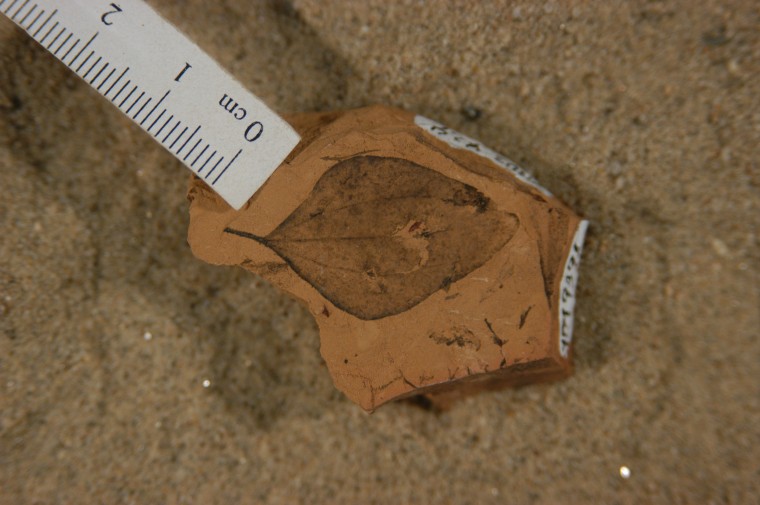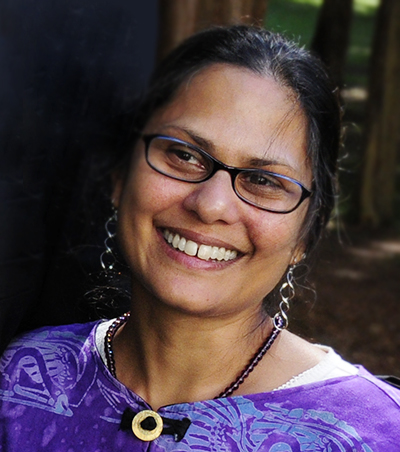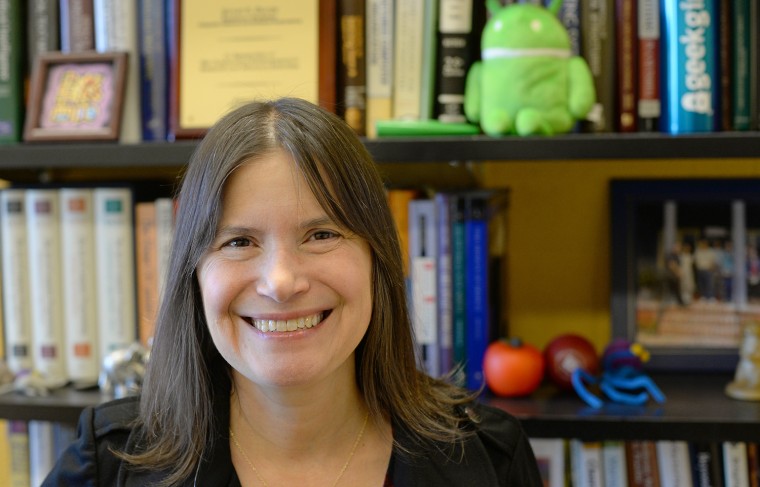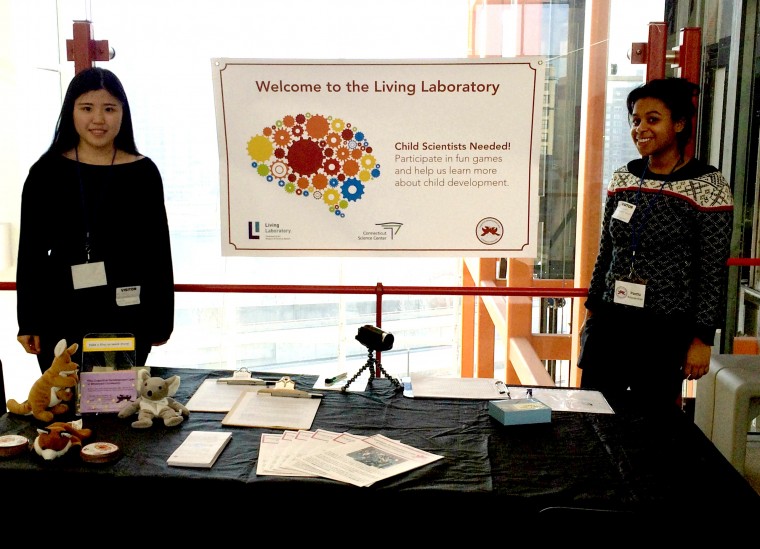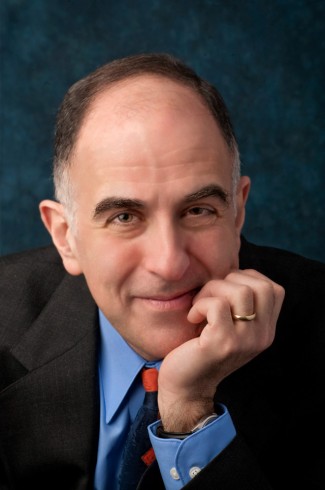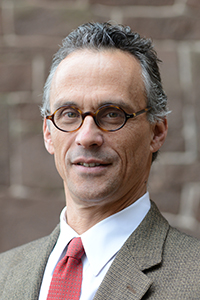Sixty-six million years ago, a meteorite struck the Earth with enough force that the ensuing environmental changes, including floods, earthquakes, variable temperatures and light-obscuring dust clouds, possibly wiped out dinosaurs and other pre-historic life. Scientists believe this opened a path for mammals, and ultimately humans, to evolve. A new study by Dana Royer, associate professor of earth and environmental sciences, and colleagues from the University of Arizona and the Denver Museum of Nature and Science suggests that the chaos in the wake of the space rock's impact changed the Earth's plant life as well. Deciduous plants survived and flourished to a…
Ishita Mukerji, dean of natural sciences and mathematics and director of technology initiatives, represented Wesleyan at a White House-sponsored conference of STEM educators Sept. 16. Mukerji said she was intrigued by other universities' approaches to increase access to science, technology, engineering and math - and happy to share Wesleyan's STEM initiatives with her counterparts. "It was a great opportunity to learn about what works and compare with what we are doing," said Mukerji, who also is professor of molecular biology and biochemistry."I was happy to see that in many instances, we were on the right track and have some of the…
Dana Royer, associate professor of earth and environmental sciences, is the co-author of “Plant Ecological Strategies Shift Across the Cretaceous-Paleogene Boundary,” published in PLOS Biology on Sept. 15. The study reveals that a meteorite that hit Earth 60 million years ago – and may have led to the mass extinction of the world’s dinosaur population – also led to a shift in the landscape of plants, particularly deciduous plants. Royer and his colleagues showed how they applied bio-mechanical formulas to fossilized leaves of flowering plants dating from the last 1.4 million years of the Cretaceous period and the first 800,000 of the Paleogene. Read more about…
Q: Welcome to Wesleyan, Professor Burge! Please fill us in on your life up to now. A: I’m originally from Michigan, and attended undergrad at Michigan Tech. I moved out to Massachusetts and worked on radar systems for quite a few years. I did a lot of off-site work traveling all around the country; it’s exciting to see the products you build in action. I always planned to go back to graduate school, and I decided to pursue a master’s in computer science at Worcester Polytechnic Institute. I started out there part time, but then an opportunity arose and I…
Faculty and student researchers from Wesleyan's Cognitive Development Lab recently received a $3,000 stipend from the National Living Laboratory® Initiative, which receives support from the National Science Foundation. The award will support an ongoing collaboration between Wesleyan and the the Connecticut Science Center. Hilary Barth, associate professor of psychology, associate professor of neuroscience and behavior, oversees a Living Laboratory® site at the science center's museum. For the past year and a half, Wesleyan researchers have visited the museum on Saturdays to collect data for current studies, talk with children and their families about child developmental research, and guide visitors in hands-on activities that demonstrate important findings in developmental psychology. The…
Loui is part of a quartet that uses music to explore mental illness from a different angle
Richard Grossman, professor of economics, was invited to become a Research Network Fellow of CESifo, a leading European economic research organization based in Munich, Germany. The CESifo Group consists of the Center for Economic Studies at the Ludwig Maximilian University of Munich, the Ifo Institute of Economic Research, and the CESifo Munich Society for the Promotion of Economic Research. CESifo combines the theoretically oriented economic research with empirical research and is often at the center of economic policy debates in Germany and throughout Europe. As a fellow, Grossman will be a member of the Network’s Money, Macro, and International Finance area and…
"A World of Dreams—New Landscape Paintings" by Professor of Art Tula Telfair will be on exhibit through Dec. 7 at the Ezra and Cecile Zilkha Gallery. "A World of Dreams" includes new large-scale paintings in which Telfair presents monumental landscapes and epic-scale vistas that are simultaneously awe-inspiring and intimate. This is her second exhibition in the Zilkha Gallery. Read more about the exhibit here. The exhibit's opening reception was held Sept. 16 at the gallery. (Photos by Dat Vu '15) (more…)
President Michael Roth discussed "The Future of Education" at the 92nd Street Y's Social Good Summit on Sept. 21. The event is the focus of his popular MOOC on the Coursera platform, which will be offered again starting in Nov., 2014. In his second appearance at the annual two-day festival of ideas, Roth discussed why education is still the best vehicle for social change, even while it has become more controversial then ever. Watch the video of his talk. "Education remains the most potent tool for changing the world, " he said. "And training teachers who can help students acquire the…
In 1961, the Communist government of the German Democratic Republic began constructing a 96-mile-long dividing wall in attempt to prevent Western “fascists” from entering East Germany and undermining the socialist state. The Berlin Wall, made of concrete and barbed wire, prevented emigration and more than 170 people were killed trying to cross or get around the wall. On Nov. 9, 1989, the head of the East German Communist party opened the checkpoint, allowing thousands of East and West Berlin residents to pass through. Elated residents, later known as "wallpeckers" used hammers and picks to break apart the wall. In 1990, East and West Germany reunified…
Abigail Hornstein, associate professor of economics, and her former thesis student, Zachary Nguyen '12 are the co-authors of a paper titled "Is More Less? Propensity to Diversify via M&A and Market" published in the International Review of Financial Analysis, June 2014, pp. 64-88. Mergers and acquisitions (M&A) could lead to a firm diversifying into new industries, and the impact of this may be related to the firm’s prior diversification. By using a panel of 1,030 M&A transactions from 2000-2010, Hornstein and Nguyen found that that previously diversified firms are more likely to pursue industrially diversifying M&A. "Both previous and contemporary diversification…
Chakravarti explains the personal history behind Obama's cautious response to Ferguson


